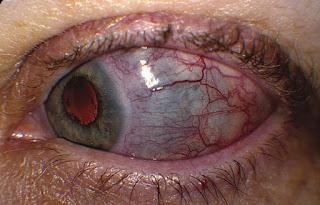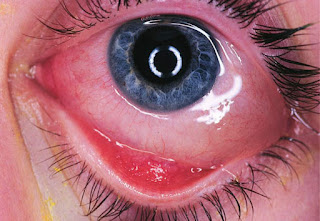1. Pleomorphic Adenoma
The pleomorphic adenoma- mixed salivary gland tumor- is a benign tumor, and the commonest salivary gland tumor. It is most commonly seen in the parotid gland and typically forms a mass in the lateral lobe, which slowly enlarges over many years, women in their forties are most often being affected.
Clinical Features
On palpation the tumor is firm, non tender and smooth or lobulated in texture. initially spherical and encapsulated, it may eventually spread more deeply, with the result that recurrence after resection is common. On oral examination the deep part of the gland may have pushed the tonsil and pillar of the fauces towards the midline.
Histology:
Histologically, it is highly variable in appearance, even within individual tumors. Classically it is biphasic and is characterized by an admixture of polygonal epithelial and spindle-shaped myoepithelial elements in a variable background stroma that may be mucoid, myxoid, cartilaginous or hyaline. Epithelial elements may be arranged in duct-like structures, sheets, clumps and/or interlacing strands and consist of polygonal, spindle or stellate-shaped cells (hence pleiomorphism). Areas of squamous metaplasia and epithelial pearls may be present. The tumor is not enveloped, but it is surrounded by a fibrous pseudocapsule of varying thickness. The tumor extends through normal glandular parenchyma in the form of finger-like pseudopodia, but this is not a sign of malignant transformation.
Pleomorphic adenoma consists of mixed epithelial (left) and mesenchymal cell components (right). The latter often exhibits myxofibrous appearance and in some instances shows chondromatous differentiation.
2. Adenolymphoma (Warthin’s Tumor)
It is a bening tumor and the second most common salivary tumor and is found exclusively in the parotid gland. It usually affects males in their fifties, forming a slow growing, painless swelling over the angle of the jaw, there is a high incidence of bilateral disease.
2. Adenolymphoma (Warthin’s Tumor)
It is a bening tumor and the second most common salivary tumor and is found exclusively in the parotid gland. It usually affects males in their fifties, forming a slow growing, painless swelling over the angle of the jaw, there is a high incidence of bilateral disease.



















